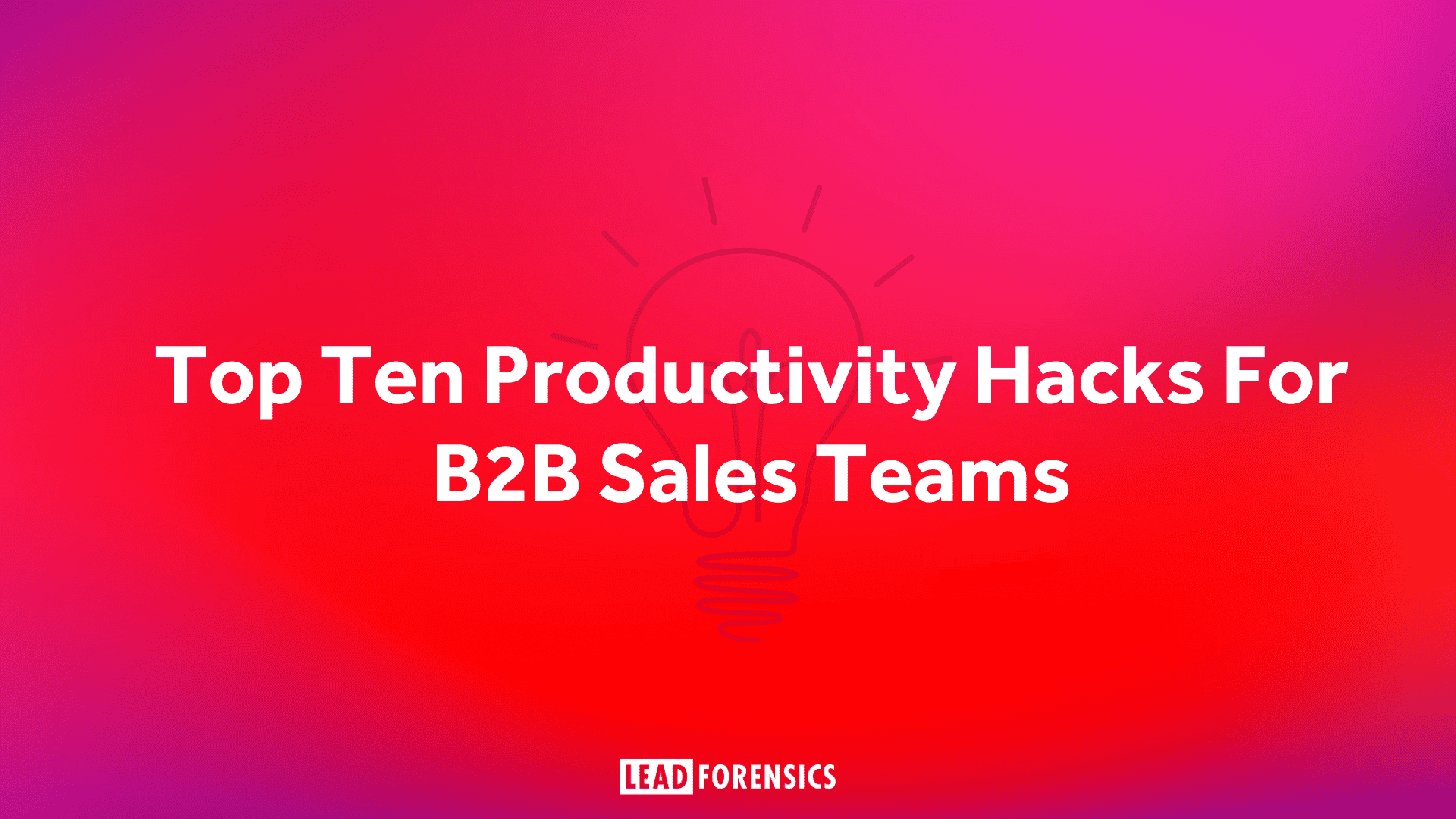Why sales lead qualification is difficult
Before we delve into tips to ensure successful sales lead qualification, we need to understand why the process poses a challenge to many B2B sales teams. Qualification processes often involve asking your new business opportunities a number of questions to gain the data you need. This can sometimes make leads feel uncomfortable, as they aren’t learning more about your product, they’re just providing the information they already know. The salesperson’s keen desire to qualify their new business opportunity has led to almost 3 in 4 prospects feeling their needs aren’t met on the first phone call. Sales teams must discover how best to get the qualifying information they need, while ensuring the potential buyer is well suited to their product, without driving them away.
1) Start lead scoring
A great strategy for sales lead qualification is to use a lead scoring model to gain some of the vital information you need without asking the prospect for it directly. Lead scoring gathers prospect information based on their engagement with your brand and data fields they have previously filled. The more they engage with your website, content and communications, the higher their score. Once they reach a certain number, they’re ready to contact. With a proper model set up, you can gain the vital contact data you require, and additional information about the specific content and webpages they’ve engaged with, helping you understand their business pain-points and needs.
This allows your initial phone call to give the prospect more of what they want, while still opening the opportunity to gather the remaining qualifying information you need to properly tailor your product to their business requirements.
2) Do some homework
Instead of asking your new business opportunity to provide all the information you need, and risk putting them off your product, why not find some of it our yourself? With a little bit of well-structured homework, you can gather a vast amount of useful information for sales lead qualification, blowing your business leads away with an outstanding first impression. Looking at your lead’s LinkedIn profile, you can discover details about their current role and business, whilst gaining insight into what topics interest them, and what may be currently concerning them. By thoroughly engaging with your lead’s business website you can gather basic contact details and an understanding of their latest news and product launches.
This means it’s easier to ask important qualifying questions that get the answers you want. For example, you can ask “I have XXX as a contact number for you, is that the best way to reach you?”. This is a yes or no question that many sales leads will be happy to elaborate on. Asking outright what their number is, isn’t quite as effective.
3) Begin with BANT
When looking for effective sales lead qualification, BANT is a great place to start as it outlines the key areas you need to understand before delving too deeply into the sales pipeline. BANT stands for Budget, Authority, Need and Timeframe. Gaining information pertaining to each element of BANT offers you a firm base to build a reliable foundation for your next sale.
Understanding how much budget your lead has dictates whether your product can meet their expectations; understanding their need and authority helps you discover if there is a genuine chance of winning a sale, and timeframe offers insight into the urgency behind their inquiry. But you don’t want to ask for these details directly – starting your call with “what’s your budget?” isn’t exactly great service and would put a majority of leads off completely. So, you need to ask clever questions that serve a dual purpose and provide the BANT information you need while helping move the lead closer to a sale. That’s where SPIN comes into play…
4) Look to SPIN
Neil Rackham created SPIN selling to help sales teams ask the right questions during the sales lead qualification period so they can gain the information needed to successfully nurture the lead through their pipeline, while proving the importance and value of their product to boost lead engagement. Impossible you say? Not with SPIN. Here’s how it works:
S – Start by asking about the prospect’s current situation, to better understand their motives and tailor your offering to their needs e.g. “How do you currently obtain and manage your sales leads?”
P – Then ask questions that help the prospect understand their business has a problem you can solve, while also gaining continued valuable information e.g. “Does your team have a shortage of high-quality leads?”
I – Ask questions that prove the potential implications these problems could have on the prospect if unresolved by your solution e.g. “If your team continues to gain low-quality leads, will it stifle your business growth?”
N – Finally, ask the prospect questions that help them understand how valuable your solution could be in solving their business’s problem (Need-Payoff) e.g. “Why is gaining plenty of high-quality sales leads important to your future?”
It’s easy to see how asking SPIN questions benefit the prospect as much as you. The process helps them understand how they can improve their business and prevent future problems and will make sales lead qualification easier. It also provides you with the perfect structure to withdraw the BANT detail you need, while propelling your sales lead further down the pipeline – a winning combination.
5) Enrich your data profiles
All sales leads should have a data profile, where all the information you need to communicate with a lead is held. From their name and business, to contact number and email address, the more each profile contains, the easier it will be to contact your pipeline prospects and track them throughout their buyer journey. Even details like postal address, working hours and additional BANT qualifying information, all help in sales lead qualification and tailoring your approach.
Creating a data profile alerts you quickly to what areas of sales lead qualification data you’re missing, and what details you’ll need to ask for on your next communication. Some CRMs help you build the right data profiles for enrichment, and can even link them to your lead scoring model. Data drives so much of business success; without it, you would rarely close a successful sale.
So many sales teams have a structured sales lead qualification process, but very few have a proper system for recording answers and building vital data profiles, inevitably causing problems further down the line. For example, if an emergency takes you away from work for a day and you’re unable to keep your sales appointments, would you expect your prospects to wait until your return? You may completely lose sales opportunities. It makes sense for the meeting to be kept by a colleague, to ensure the sales pipeline continues moving.
But, how can they pick this lead account up without access to their data profile and valuable qualifying information? Ensure all vital information can be easily communicated between team members. The lead must always come first, so ensure all the detail linking to their lead account is used on every call and for every communication – no matter who they’re from.
6) Use Lead Forensics
To streamline your sales lead qualification, look to an advanced sales tool that can offer contact information and a detailed understanding of business needs and requirements. Lead Forensics identifies the businesses visiting your website, providing contact details for their key decision-makers and offering a detailed breakdown of their online journey.
Opening your eyes to new sales leads and alerting you when existing prospects are visiting, the software provides your team with the information to enrich their data profiles and gain a better understanding of what each lead needs. Knowing what pages they’ve viewed and what content they engage with, you can easily understand their business interests and pain points for a more impactful qualification approach.
Book your free trial of Lead Forensics here.








